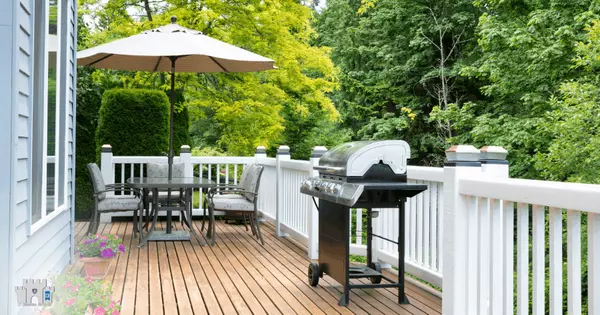The Basics of Building a Coffee Setup at Home

Creating an art studio at home helps you stay focused and enjoy your craft. First, find a space that you can dedicate to creative work. A spare room, a garage corner, or even a closet can work with the right setup. Natural light is ideal, but any good lighting is helpful. Make sure the space is quie
Read MoreMaking a Move Easier for Young Kids

Moving can be tough on adults, and it’s often confusing for children. When planning a move, it helps to talk to your kids early. Tell them what’s happening, why you're moving, and what to expect. Keep your explanations simple and honest. Try to answer their questions clearly. Let them express how th
Read MoreHow to Build a Craft Space That’s Both Fun and Functional

A craft area gives kids a place to be creative and have fun. When designing the space, think about how it will be used. Kids might draw, paint, build, or make things with glue and scissors. The area should handle different types of messes. A hard surface table is a good choice, easy to wipe and clea
Read MoreCamping at Home: What You’ll Need

Backyard camping is a great way to enjoy the outdoors without going far. It’s a simple way to try camping for the first time, especially with kids. Start by picking a clear, flat area for your tent. Make sure it’s free of sharp sticks, rocks, or ant hills. If you don’t have a tent, you can build a s
Read MoreSimple Houseplant Decorating Ideas

Houseplants are a simple way to add life to your home. Start with plants that are easy to care for, like snake plants, pothos, or peace lilies. These do well in most indoor conditions and don’t need much attention. Place one on a windowsill, coffee table, or kitchen counter. Think about the light in
Read MoreHow to Create a Cozy Tea Party at Home

A tea party doesn’t need to be fancy to be enjoyable. Start by picking a space where everyone can sit comfortably. A small table in the living room or even on the porch works well. Use what you already have—there’s no need to buy special tea sets. Lay out a simple tablecloth or runner to add a bit o
Read More-

Hosting a backyard BBQ is a simple way to bring people together. Start by choosing a date that gives you enough time to plan. Check the weather forecast so you can avoid surprises. Let your guests know early, especially if you’re inviting a group. Ask about any food allergies or preferences in advan
Read More Finding Balance Between Old and New Decor

Combining older items with newer pieces in your home can create a style that feels both comfortable and personal, reflecting your own experiences and taste. You don’t need to choose one look over another—instead, use your favorite objects from different times and styles to build a space that works f
Read MoreHow to Plan a Budget-Friendly Home Renovation

A home renovation doesn’t have to cost more than you can afford. The first step is to know how much money you’re willing to spend. Make a list of the changes you want to make, then rank them by importance. Focus on repairs and updates that improve how you live in your space. Try to avoid anything th
Read MoreHow to Start Saving for Your Dream Home

Buying a home can feel overwhelming when you’re just getting started. Before you look at houses or book a showing, take time to think about how much money you’ll need to set aside. Planning ahead helps make the process smoother and less stressful. Even though it’s possible to buy a home with a small
Read MoreWhy You Should Consider Creating a Home Gym

Exercise is a vital part of maintaining a healthy lifestyle, as it impacts every aspect of our lives. Staying active doesn’t just keep our bodies in good shape; it also supports mental clarity, emotional well-being, and helps prevent numerous health issues. However, many people lead busy lives, jugg
Read MoreHow to Find a Home That Fits Your Needs and Budget

Finding the perfect property is an exciting journey, but it can also feel overwhelming. With so many options available, it’s easy to feel lost. However, with the right approach, you can confidently navigate the house-hunting process and find the home that’s just right for you.Start by defining what
Read MoreWhy Owning a Home Is More Than Just Having a Roof Over Your Head

For many, owning a home is the ultimate milestone — a symbol of stability, achievement, and freedom. But beyond the pride of having a place to call your own, homeownership comes with a variety of benefits that can make a lasting impact on your financial and personal well-being. Let’s dive into the
Read MoreEssential Steps to Find Your Dream Home

Embarking on the exciting journey of homeownership requires careful preparation and consideration before you start searching for your dream house.To ensure you're well-prepared for this significant milestone, follow these essential steps.Organize Your FinancesBegin your home buying journey by gettin
Read MoreFun Backyard Activities for Families

A backyard offers endless opportunities for families to spend quality time together while staying active and engaged. One of the simplest and most enjoyable activities is setting up a DIY outdoor game area. Classic games like cornhole, giant Jenga, or ring toss can provide hours of entertainment for
Read MoreCoffee Table Styling Tips That Work for Every Space

A well-styled coffee table adds character and balance to a living space. The key is choosing the right mix of decorative and functional items. Using a combination of books, trays, and small decorative objects creates visual interest. Placing a statement piece, like a vase or sculpture, serves as a f
Read MoreUnique Ideas for Transforming Your Spare Room

A spare room offers endless possibilities beyond just being a guest bedroom. Before deciding on its purpose, consider your lifestyle and needs. If you work from home, converting it into a home office provides a quiet workspace. Adding a desk, comfortable chair, and proper lighting creates a function
Read MoreHow to Design Your Living Room Into a Welcoming Space

A cozy living room provides a space where family and guests can relax and feel comfortable. Choosing the right furniture layout can make the space feel welcoming and functional. Arranging seating to encourage conversation creates a warm and inviting atmosphere. Soft and comfortable seating, such as
Read MoreHome Best Outdoor Features for Entertaining Guests

Outdoor spaces provide great opportunities for entertaining guests. A patio or deck offers a comfortable area for seating and dining. Fire pits create a cozy atmosphere and extend outdoor gatherings into cooler seasons. Outdoor kitchens allow for convenient food preparation and cooking. String light
Read More10 Things to Avoid When Trying to Sell Your Home

10 Things to Avoid When Trying to Sell Your Home Selling your home can be an exciting, yet nerve-wracking, experience. Whether you're moving for a new job, upsizing, or downsizing, there’s a lot that goes into the process. You want to get the best price, sell quickly, and avoid unnecessary complic
Read More
Categories
Recent Posts










